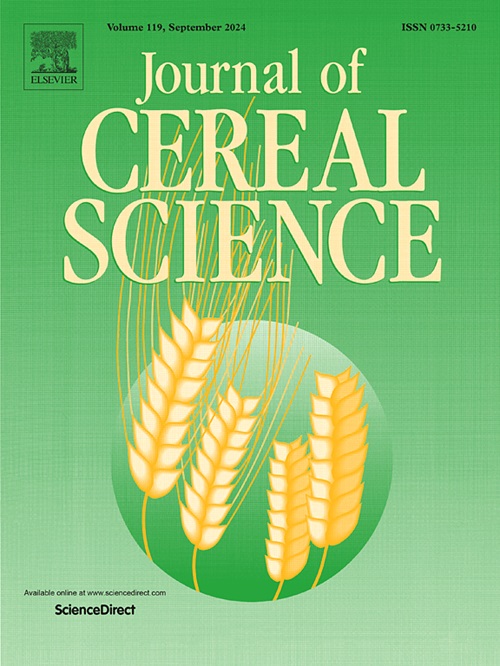Enzymatic polishing of pearl millet grains: A novel approach to reduce decortication losses
IF 3.7
2区 农林科学
Q2 FOOD SCIENCE & TECHNOLOGY
引用次数: 0
Abstract
The study aimed to develop an enzyme-assisted method as an alternative to conventional abrasive polishing for pearl millet grains to minimize nutritional losses. Millets, known for their high nutritional value, typically undergo abrasive decortication, which removes the bran and outer layers but also results in significant nutrient loss. To address this, an enzyme assisted process was formulated to selectively degrade the outer layers of pearl millet grains using cellulase, xylanase and pectinase enzymes. The extent of dry matter loss from abrasive polishing ranged from 10.60 % to 18.54 %, accompanied by substantial reductions in nutrient content. In contrast, enzyme-assisted decortication effectively weakened the pericarp with minimal nutrient loss. The enzyme extract was characterized by analyzing total soluble solids, reducing sugars, glucose, xylose, galacturonic acid, tannins, and phytates to assess pericarp degradation. Process optimization was carried out using response surface methodology and artificial neural network–genetic algorithm modelling approaches. The findings demonstrated the potential of enzyme-assisted decortication as a nutritionally superior and efficient alternative to traditional methods.

酶法抛光珍珠粟粒:一种减少去皮损失的新方法
该研究旨在开发一种酶辅助方法,以替代传统的研磨抛光珍珠小米,以最大限度地减少营养损失。以其高营养价值而闻名的小米,通常会经历磨砂去皮,去除了麸皮和外层,但也会导致显著的营养损失。为了解决这一问题,制定了酶辅助工艺,利用纤维素酶、木聚糖酶和果胶酶选择性地降解珍珠粟颗粒的外层。磨料抛光的干物质损失范围从10.60%到18.54%不等,伴随着营养成分的大量减少。相比之下,酶辅助去皮有效地削弱了果皮,而营养损失最小。酶提取物通过分析总可溶性固形物、还原糖、葡萄糖、木糖、半乳糖醛酸、单宁和植酸盐来评估果皮降解。采用响应面法和人工神经网络遗传算法建模方法进行工艺优化。研究结果表明,酶辅助去皮作为一种营养上优越和有效的替代传统方法的潜力。
本文章由计算机程序翻译,如有差异,请以英文原文为准。
求助全文
约1分钟内获得全文
求助全文
来源期刊

Journal of Cereal Science
工程技术-食品科技
CiteScore
7.80
自引率
2.60%
发文量
163
审稿时长
38 days
期刊介绍:
The Journal of Cereal Science was established in 1983 to provide an International forum for the publication of original research papers of high standing covering all aspects of cereal science related to the functional and nutritional quality of cereal grains (true cereals - members of the Poaceae family and starchy pseudocereals - members of the Amaranthaceae, Chenopodiaceae and Polygonaceae families) and their products, in relation to the cereals used. The journal also publishes concise and critical review articles appraising the status and future directions of specific areas of cereal science and short communications that present news of important advances in research. The journal aims at topicality and at providing comprehensive coverage of progress in the field.
 求助内容:
求助内容: 应助结果提醒方式:
应助结果提醒方式:


